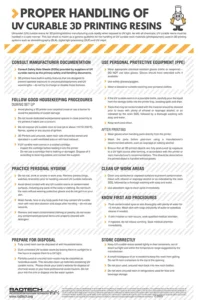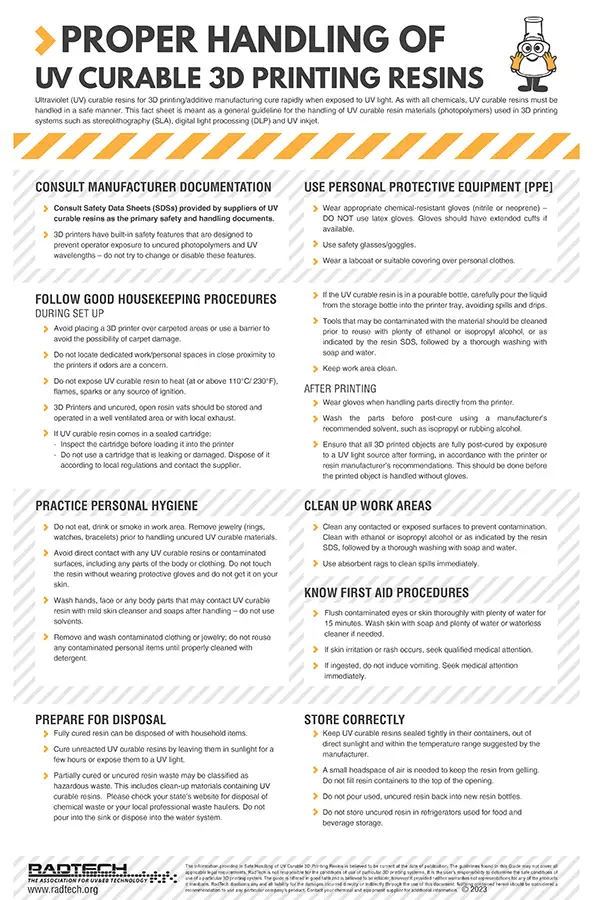By Dianna Brodine, vice president, editorial, UV+EB Technology
RadTech has updated its UV 3D Printing Safe Handling Guide.
 3D-printing technology has decreased in cost, encouraging increased home use as well as implementation in other non-laboratory settings, such as libraries, schools or workshops. While many different technologies are used in 3D printing, UV-curable 3D printing – also known as photopolymer additive manufacturing – offers the ability to print high-quality objects with superior resolution. However, the process and chemistry do require proper procedures for safe use.
3D-printing technology has decreased in cost, encouraging increased home use as well as implementation in other non-laboratory settings, such as libraries, schools or workshops. While many different technologies are used in 3D printing, UV-curable 3D printing – also known as photopolymer additive manufacturing – offers the ability to print high-quality objects with superior resolution. However, the process and chemistry do require proper procedures for safe use.
Initially launched in 2017, the UV 3D Printing Safe Handling Guide was designed as a poster that could provide information to end users who are not scientists and might not be aware of the environmental or safety hazards. A team comprised of RadTech staff and volunteer members of the industry began developing the environmental health and safety (EHS) guide by considering what consumers would need to know to safely work with the technology. The next step was to ensure it could be read and understood by someone who did not have a background in chemistry or related science. Once the content was finalized, a competition among graphic arts students at the University of Iowa yielded the final poster design.
The poster includes information on chemical hazards and safe handling, including the need to use appropriate gloves and goggles and the necessity of keeping food and drinks away from the printing area. Users are provided guidance on how to clean up any spills and how they can handle and treat the materials with respect. This includes the need to keep leftover fluids out of the water system since local municipalities might classify partially cured or uncured resin as hazardous waste.
“When the Safe Handling Guide was developed in 2016, the best practices at that time were used as the starting point,” said Mike Idacavage, RadTech volunteer and founder of Radical Curing LLC. “Since then, small improvements have been made in several areas such as the use of ethanol as an alternative to isopropanol and including local exhaust systems under the category of a well-ventilated area. In addition, several short paragraphs were combined, and some duplicated information was deleted to make a more readable document.”
The updated EHS guide will be available for download on the RadTech website at www.radtech.org.







